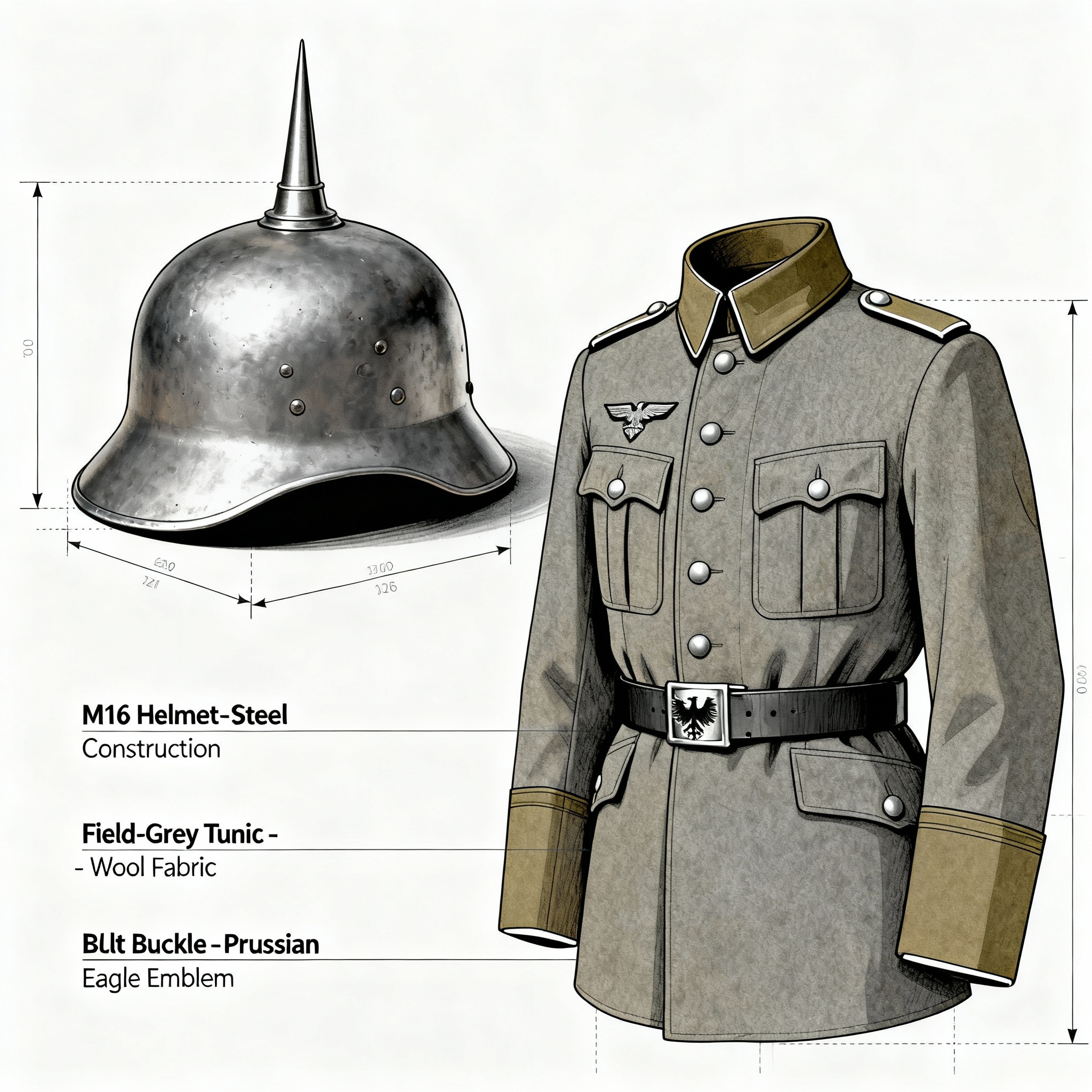
WW1 German Helmets & Uniforms: Repro Guide
Published on Oct 02, 2025
Introduction
Did you know that collectors spend over $1 billion annually on military memorabilia worldwide? Among these treasures, World War 1 German helmets for sale remain some of the most sought-after items for both history buffs and reenactors.
But buying or reproducing WW1 German gear is more than just a shopping spree. It’s about authenticity, accuracy, and appreciation of history. Whether you’re fascinated by the sleek lines of a Pickelhaube, intrigued by the practicality of a German camouflage jacket, or searching for accessories like the German knife WW1, this guide will help you navigate the world of reproduction uniforms.
Let’s break down how to choose, buy, and care for your WW1 German uniform reproductions while avoiding common pitfalls.
Why Collect or Reproduce WW1 German Gear?
- Historical appreciation: Wearing or displaying accurate reproductions brings history to life.
- Reenactment accuracy: Clubs and events demand authenticity for full immersion.
- Investment value: Quality reproductions can increase in value as originals become rarer.
World War 1 German Helmets for Sale: What You Need to Know
1. Types of Helmets You’ll Encounter
- Pickelhaube (Spiked Helmet): Iconic early-war helmet, made from leather and brass fittings.
- Stahlhelm (Steel Helmet): Introduced in 1916, offering better protection.
- Camouflage Variants: Often hand-painted in geometric patterns for concealment.
2. How to Identify Good Reproductions
- Material quality: Originals were leather or steel—avoid plastic imitations.
- Markings: Check for historically accurate stamps, dates, and unit insignia.
- Weight & feel: A real WW1 German helmet reproduction should feel solid, not flimsy.
3. Where to Find Helmets Today
- Specialist militaria shops (online and offline).
- Reenactment supply companies.
- Auction houses and collector’s fairs.
👉 Pro Tip: Always ask sellers for detailed photos and measurements. Many fakes float around, especially online.
Uniform Components Beyond Helmets
While World War 1 German helmets for sale grab the spotlight, a true reproduction uniform has many layers.
The German Camouflage Jacket
- Designed for frontline concealment.
- Reproductions often use durable cotton or canvas.
- Look for correct colour schemes: muted greens, browns, and ochres.
Austro-Hungarian Helmet WW1
- Similar to the German Stahlhelm but with subtle design differences.
- Collectors often confuse the two—make sure to check shape and rivet placement.
WW1 Russian Helmet
- Owning reproductions from other nations adds depth to any collection.
- The Russian "Adrian" helmet was heavily influenced by French design.
German Knife WW1 (Trench Knife)
- Essential sidearm for close combat.
- Reproductions should have wooden grips and proper blade length (approx. 6 inches).
- Be cautious: many cheap replicas have incorrect handles or shiny, unrealistic finishes.
World War 1 German Helmets for Sale: Common Pitfalls
1. Falling for Fake “Originals”
Many sellers market helmets as authentic when they’re modern reproductions. That’s fine if you’re after replicas, but not if you’re paying antique prices.
2. Ignoring Size & Fit
- Collectors often buy helmets too small or too large.
- Always measure head circumference and compare to sizing charts.
3. Overlooking Accessories
- A helmet alone doesn’t create the full impression.
- Straps, liners, and insignia matter for authenticity.
Actionable Steps for Beginners
- Start Small
Begin with one item, like a reproduction Stahlhelm, before building a full uniform. - Do Your Research
Study reference books and museum pieces. Websites and reenactment forums are goldmines. - Set a Budget
- Entry-level helmet reproductions: $80–$150.
- Higher-end custom pieces: $300–$500.
- Accessories like a German knife (WW1): $40–$100.
- Join a Community
Reenactment groups, Facebook forums, and collector clubs provide advice and trustworthy sellers. - Care for Your Reproductions
- Store helmets in cool, dry spaces.
- Oil leather parts lightly to prevent cracking.
- Avoid harsh cleaners that strip patina.
Current Trends in WW1 Collecting
- Rise of Digital Reenactments: Online history communities use gear for VR or AR experiences.
- Hybrid Collecting: Mixing original small items (like buttons) with reproduction uniforms.
- Focus on Lesser-Known Nations: More interest in items like the Austro-Hungarian helmet from WW1 and the WW1 Russian helmet.
Conclusion: Bringing History to Life
For history lovers, reenactors, or collectors, exploring World War 1 German helmets for sale is more than shopping—it’s a journey into the past. From the bold Pickelhaube to the rugged Stahlhelm, every piece tells a story.
By avoiding common pitfalls, focusing on quality reproductions, and joining active communities, you’ll not only build an authentic collection but also keep history alive for future generations.
